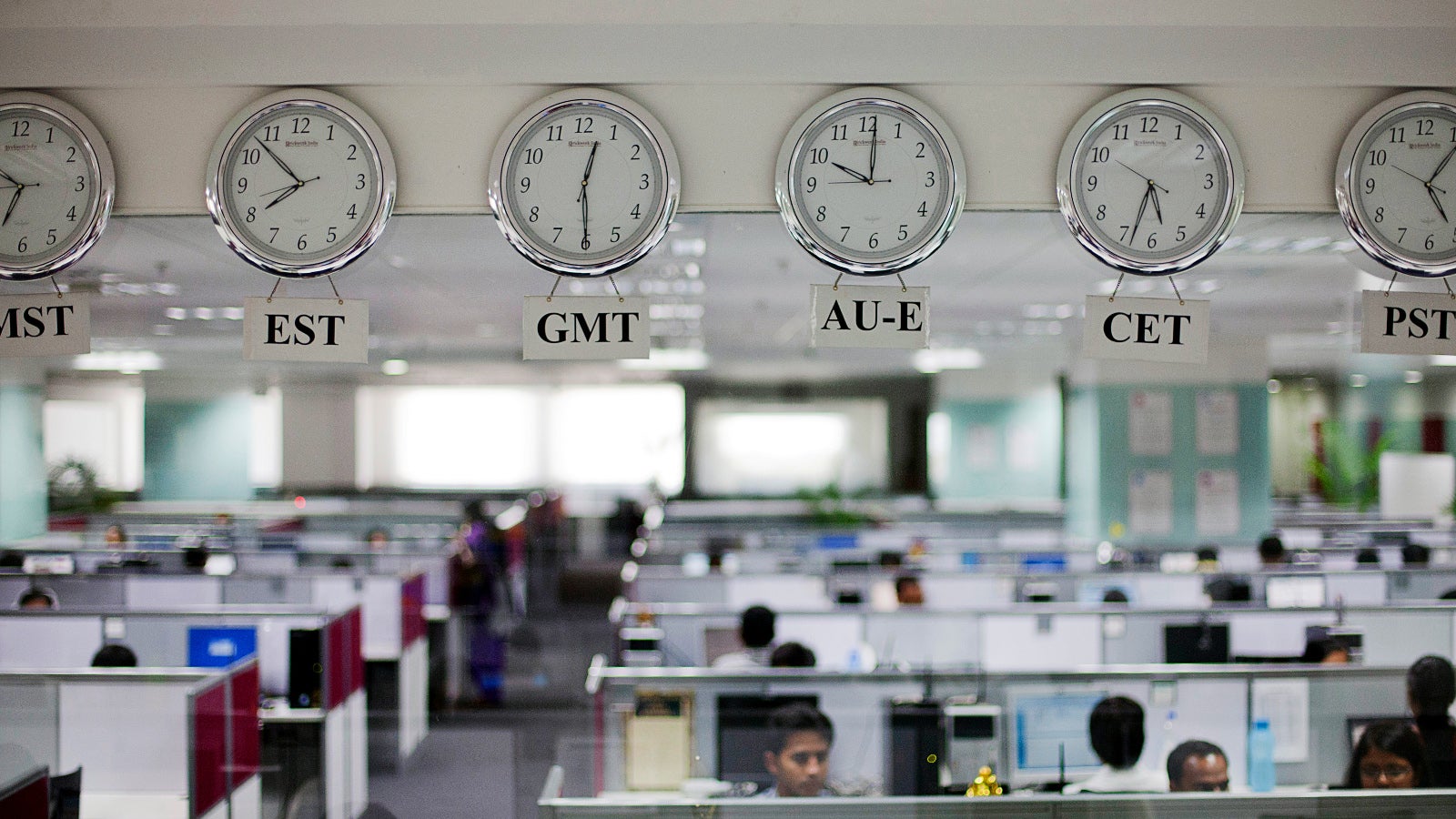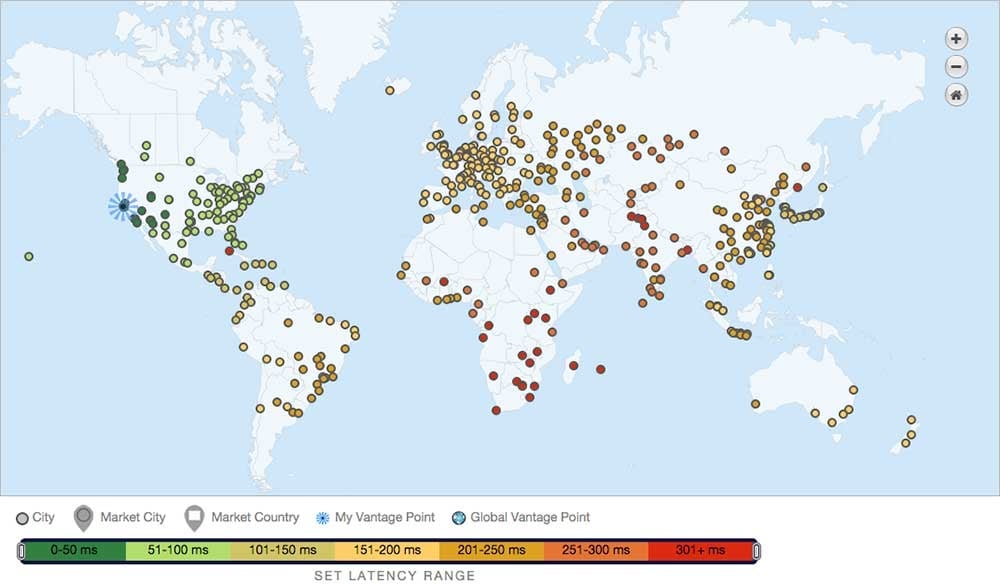How to stop your internet from getting lost on the way to India
In the maze of private networks that makes up your global internet, getting from here to there isn’t always as straightforward as it seems.


In the maze of private networks that makes up your global internet, getting from here to there isn’t always as straightforward as it seems.
Consider a company in Paris aiming to reach customers in India with a new web product. Its data needs to cross the globe expeditiously to make sure there’s a good experience in India, but the reality, according to Dyn, an internet performance company, is that data sent from Paris to Mumbai has a 40% chance of going through London before turning east, adding about 8 milliseconds to the time it takes their user to see that data. 8 ms may not sound like a lot, but when it comes to internet traffic, every little bit of latency—the amount of time you wait between sending a command and getting a response back—matters.
Dyn has a handle on this because it has put in place a network of 150 sensors around the world that constantly monitors the speed and route of data traversing the internet; today marks the public unveiling of this service.

The map above shows the location of Dyn’s sensors, as well as the time it takes for data to travel from California’s Bay Area around the world. Note that while the internet may have “flattened” the world, it has not made geography obsolete—just more complicated. Jeremy Hitchcock, Dyn’s CEO, says he expects many companies to use this tool when planning expansions of their network infrastructure to ensure that the physical location of a data center matches its most efficient placement on the network.
But the ability to map the path of their data could also help companies keep ISPs and other transit providers honest. Look at this trouble-shooting report Dyn created for data travelling from Seoul, South Korea to San Jose, California: Each dot represents a single packet of data. and while most move quickly, indicated by the band around 150 ms, some follow a path that requires twice as much time, around 300ms.

By revealing these disparities, companies can take action to change how their networks work or pressure their ISPs to do the same. While ISPs provide some measurement services like these, there is a natural conflict of interest. Dyn’s product, Hitchock says, will allow companies to call out networks for poor service. For example, ISPs will sometimes avoid the fastest route for data if they can send it more cheaply through a slower connection, bolstering their bottom lines at the expense of customer performance.
“No one is calling bullshit on a realtime basis,” Hitchock says. “The first step for us to really opening up the kimono of how this stuff works, and demanding that people being network providers are consistent about how they perform.”